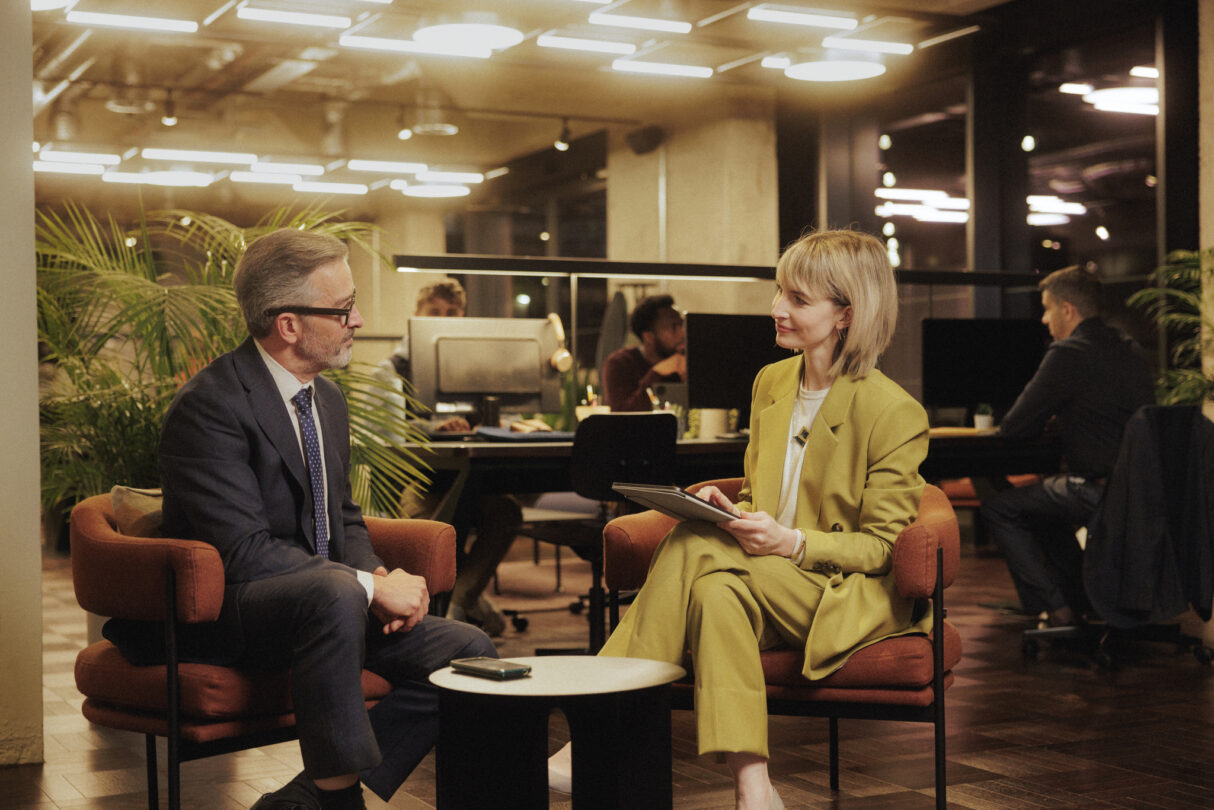Growth & Customers
How stellar customer experience can reverse declining brand loyalty
Positive customer experiences are crucial for the success of any business. In this article we cover exactly how to create positive customer experience.

Do customer experience well and you can build enduring relationships and create sustainable, long-term value for your business. Do it badly and you risk losing even your most loyal and long-standing customers.
Do customer experience well and you can build enduring relationships and create sustainable, long-term value for your business. Do it badly and you risk losing even your most loyal and long-standing customers.
What is customer experience?
Customer experience can be defined as the holistic understanding of how your business engages with its customers at every point of their buying journey—from marketing to sales to customer service, back office, and support.
It reflects how your customers feel when they interact with your products, services, and organization. And it’s the sum total of all interactions a customer has with your brand, from the moment of initial brand awareness to their post-purchase feelings and perceptions.
Why customer experience matters
How your company chooses to define its customer experience—how you decide you want people to feel when they come into contact with your company—can play a crucial role in driving loyalty, growth, and sustained revenue.
That’s because when people feel good about their interactions with your business and have a positive experience with your brand, they want to stay with you.
As a result, when your customer experience is good, you will earn more revenue, retain more customers, and gain additional customers through the recommendations and referrals of your existing highly satisfied customers.
Get your free guide on creating the best customer experiences
Implement stellar customer experience from the start and prevent any potential decline in brand loyalty with this free guide.

How to prevent a decline in brand loyalty
Sounds easy, doesn’t it? However, you need to stay ahead of the game and resist any urge to be complacent when things are going well.
“Measuring and tracking customer experience is essential to helping your organization achieve success, but doing so requires a thoughtful process.”
What is customer experience (CX)? And how can you measure and improve it? Survey Monkey
Today’s customers are sophisticated. And they’re aware of their own agency—which means they can easily be swayed. The hard truth is that it doesn’t take much to turn even the most loyal patrons off your brand. One poor experience—an unhelpful interaction with your support team, a supply chain delay without explanation or apology—and they can start to explore what else is on offer in just a few clicks.
The true cost of poor customer experience
If you reframe that in terms of B2C businesses, you can get the full impact. Imagine you went into a high-class shop and the assistant was rude, or you’d gone out for an expensive meal and the food was atrocious, would you return? It’s likely that you wouldn’t. So, those establishments would not only lose out on your business in the immediate and short-term—they’d also lose out in the long and wider term as anyone you shared your experience with would likely avoid those places too.
The old rule of thumb was that it cost 5x more to get a new customer than it did to keep an existing customer. Not so drastic, perhaps, if a shop loses a sale or a restaurant takes a hit on the service charge—but if we return to the world of B2B, it’s likely that we could be talking about potential losses in the multiple thousands if not millions of dollars.
You can see why it makes good business sense, then, to provide everything your customers need to feel supported and to avoid at all possible costs the business version of a shoddy shop experience or a poor restaurant meal.
But there’s even more to customer experience than that. Because when considering how much to spend to create new or retain existing customers, it’s also important to consider the concept of customer lifetime value. Remember it’s easier to sell to an existing customer than it is to acquire a new one.
“Customer lifetime value (CLV, or CLTV) is a metric that indicates the total revenue a business can reasonably expect from a single customer throughout the business relationship.”
How to Calculate Customer Lifetime Value (CLV) & Why It Matters
Clint Fontanella, HubSpot
How to deliver value
In the digital space—your website, online forms, emails, and social media—customers have come to expect unified and seamless experiences when they interact with your organization across all digital channels. In simple terms, they expect to be able to find what they want, when they want it.
If your digital offering involves disconnected processes, lacks personalization, and demonstrates an ignorance of your customer’s place in their buying journey you run the risk of losing their interest and custom.
“Instead of treating customers merely as “buyers,” businesses need to recognize them as ever-changing multi-dimensional people who play many roles, each providing new opportunities for value creation.”
Keeping Up with Customers’ Increasingly Dynamic Needs
David Droga and Baiju Shah, Harvard Business Review
Put your customer at the heart of your business
To avoid this, you need to make sure you’re providing relevant, personalized—and friction-free customer experiences across every touchpoint of your business. Do this well and you can not only retain your existing customer base, but can create a distinction that sets you apart in the market and attracts new customers.
Get your free guide on creating the best customer experiences
Implement stellar customer experience from the start and prevent any potential decline in brand loyalty with this free guide.

Focus on your sales and support
Creating positive customer experiences across your organization means looking at your customer journeys, making sure each touch point is friction-free, and adding value where possible.
“A lot of companies focus on the old notion that it costs 5x more to get a new customer, but in doing so, they lose focus on what really matters—connecting with customers and delivering value – now and in the future.”
Does It Still Cost 5x More To Create A New Customer Than Retain An Old One?
Blake Morgan, Forbes
This can mean applying elements of user experience (UX) with your web services and social media accounts to upsell and cross-sell products and services. This must come with a constant awareness of where your customer is in their buying journey so as not to risk bombarding them with messaging or, conversely, letting a warm lead to go cold.
Focus on your customer service
In terms of customer service, good customer experiences might look like adding a team of call handlers to manage issue resolution on a one-to-one support basis, rather than using an email form.
It could involve investing in faster managerial response times for account inquiries. Or it might require an investment in an email sequence to confirm order placements, providing hands-on pre- and post-sale assistance and technical support, or seamless product activation with engineers or technicians.
Focus on the back office
Behind the scenes experiences matter too. Each customer’s ordering process should be smooth and secure, from initial inquiry through to processing and fulfillment and—where needed—after-sales care.
How to measure CX
The best way to find out how your customers feel about the customer experience you provide is to conduct market research. A cost-effective way to do this is with surveys because they’re scalable and can be segmented—helpful when your database can be made up of hundreds if not thousands of people worldwide.
They’re also actionable and easy to interpret, and trackable so you can see how responses can vary over time.
You can also introduce focus groups and a range of metrics like the Net Promoter Score® (NPS) to measure the customer experience at specific time-based intervals or to follow up on a defined set of customer experiences. Or the Customer satisfaction score (CSAT) which can measure your customers’ overall sentiment of products, services, and your company.
“When most companies approach customer experience, calculating how much a customer is worth is seen as a nefarious activity – something done in a basement. But knowing how much your customer is worth can help you make smarter, more accurate investments in your relationships, rather than spending a lot of money everywhere.”
Does It Still Cost 5x More To Create A New Customer Than Retain An Old One?
Blake Morgan, Forbes
The true impact of customer experience on business continuity
When you understand the power of providing customer experiences that engage, support, and delight your customers you build lasting customer loyalty that ensures business continuity.
You can also differentiate yourself from the competition, create distinction, and enjoy the positive business and customer outcomes that will drive accelerated and sustainable business growth.
Discover how to create experiences your customers will love with this guide to
The five critical errors of customer experience teams
You’ll learn:
- How to understand key journeys across the customer lifecycle
- The purpose of your role as a CX professional
- How to consider the larger context of CX
- How not to make a business case based on opinions & predictions (and learn why data insights are the way forward)
- Why you need to engage cross-functional teams in CX planning & measurement
Get your free guide on creating the best customer experiences
Implement stellar customer experience from the start and prevent any potential decline in brand loyalty with this free guide.








Ask the author a question or share your advice